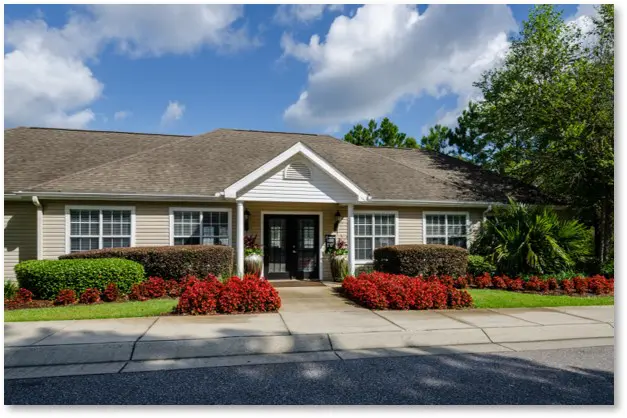1031 TAX EXCHANGE
What is a 1031 Exchange?
A 1031 Exchange is a transaction approved by the IRS allowing real estate investors to defer the tax liability on the sale of investment property. The transaction gets its name from Section 1031 of the U.S. Internal Revenue Code, which allows investors to defer capital gains tax on the proceeds of a recently sold investment property by reinvesting the proceeds into another like-kind property of equal or greater value.
Sometimes referred to as “like-kind exchanges”, 1031 Exchanges have been in existence for nearly 100 years and are used by thousands of real estate investors every year. The deferral of taxes resulting from the sale of investment property allows for investors to reposition investment real estate to help meet their objectives while preserving all of their equity so it continues to work for them.
Understanding 1031 Exchange Basics
Investors should have a well-rounded understanding of 1031 Exchange basics before selling their investment property. IRS rules must be strictly followed in order to complete a valid 1031 Exchange, including eligibility requirements, qualified properties, and exchange timelines.
To be eligible for a 1031 exchange, three criteria must be met:
- The investment property purchased (replacement property) must be of equal or greater value than the investment property sold (relinquished property).
- Investors must use all proceeds resulting from the sale of the relinquished property to purchase the replacement property.
- Both the relinquished property and replacement property must qualify as “like-kind” property.
IRS rules also require certain deadlines to be met to complete an exchange, including 45 days to identify potential replacement properties and 180 days to acquire the replacement property, thus completing the exchange.

1031 Exchange Benefits
There are many benefits of 1031 Exchanges. The primary benefit of a 1031 Exchange is the deferral of taxes resulting from the sale of investment property. 1031 Exchanges can only be used for the sale of investment real estate. No other types of investments have this very generous section of the tax code available to them.
Tax deferral is not the only benefit of 1031 Exchanges. There are many other benefits of 1031 Exchanges to consider, including:
- Deferral of taxes, including federal capital gains tax, state capital gains tax, net investment income tax, and depreciation recapture tax
- Maximize cash flow potential and investment dollars
- Eliminate inheritance and estate tax for beneficiaries
- Reduce risk through diversification
- Access to properties that do not require active management
- Access to different markets and property types
Types of 1031 Exchanges
Although 1031 Exchanges have been in the tax code since 1921, the first 63 years of exchanges only permitted what is referred to as a “Simultaneous Exchange” in which property was swapped one-for-one for other property. This structure required two owners to each want the other’s property, agree to trade, and then transfer ownership directly to the other.
Following a major Federal tax court case referred to as the “Starker Case” in the 1980s, “Delayed Exchanges” were permitted by the IRS. Delayed Exchanges are significantly more flexible than Simultaneous Exchanges because the exchanger can sell their investment property to any buyer, then perform an Exchange into like-kind replacement property with the resulting sales proceeds, provided they adhere to a number of specific rules. The most common type of exchange format today is a Delayed Exchange, where investors have 180 days to purchase replacement property following the sale of their relinquished property.
In a Reverse Exchange, the replacement property is acquired first. This strategy helps buyers purchase a new investment property as soon as it becomes available instead of being forced to sell their property first. Alternative structures include Improvement Exchanges, Simultaneous Exchanges and Partial Exchanges.
What Are the Rules for a 1031 Exchange?
While 1031 Exchanges are flexible in the number of strategies that can be implemented, the rules put forward by the IRS are not flexible. Failure to adhere to IRS rules can result in either a failed Exchange, in which the entire tax liability is due or a Partial Exchange, in which a portion of the tax liability is due. The IRS’s motivation for allowing 1031 Exchanges is to facilitate continuous investment in real estate that is held for business or investment purposes.
Exchange rules focus on two primary elements. First, there is not an infinite timeline to perform a 1031 Exchange. Second, no “economic benefit” is received by an exchanger without having paid tax. The IRS defines “economic benefit” as either receiving cash compensations (i.e. sales proceeds) or a reduction in a liability (i.e. mortgage and debt payoff) without matching the liability with a corresponding liability on the replacement property or contributing additional equity to the replacement property.
Investors considering an exchange should become familiar with the details of 1031 Exchange rules. Here is a summary of the seven primary rules:
- The exchange must be set up before a sale occurs
- The exchange must be for like-kind property
- The exchange property must be of equal or greater value
- The property owner must pay capital gains and/or depreciation recapture tax on “boot”
- The taxpayer that sold and acquired the exchange property must be the same
- The property owner has 45 days following the sale to identify replacement properties
- The property owner has 180 days following the sale to complete the exchange.
Types of 1031 Exchange Properties
There are many different types of 1031 Exchange properties for an investment property owner to consider. The IRS requires 1031 Exchange properties be “like-kind”, meaning investment property for investment property and includes all property types such as residential, industrial, commercial, etc. Given that all property types can be considered for a 1031 Exchange, the following property categories can be used to compare attributes and characteristics of 1031 Exchange properties:

Delaware Statutory Trust Properties
Tenant-in-Common (TIC) Properties
Net Lease Properties
Fee Simple Properties
How to Do a 1031 Exchange
Understanding the tax liability on your relinquished property is generally the first step with a 1031 Exchange. It’s also important to understand the rules and timeline for an Exchange before getting started. IRS exchange rules are very rigid, and the 1031 exchange timeline must be strictly followed to qualify for tax deferral.
Three very important dates must be considered to successfully complete an exchange. From the day the relinquished property closes, the exchanger has 45 days to identify their potential replacement properties and a total of 180 days to acquire the replacement property.
DAY 0: Sell Existing Property
Close on your existing property and start looking for a replacement property.
DAY 45: Identify Replacement Property
Within 45 days after closing on your relinquished property, you must identify your replacement property.
DAY 180: Close on Replacement Property
Within 180 days after closing on your relinquished property, you must close on your replacement property.
Key Steps in the 1031 Exchange Process
Finding, vetting, and acquiring suitable exchange replacement property that best aligns with your financial and lifestyle goals is typically the most challenging and time-consuming aspect of the 1031 exchange process. Review these eight key steps in the 1031 Exchange process before moving forward with selling your investment property:
- Determine if a 1031 Exchange is Right for You.
- Develop a Tax-Deferred Transition Strategy.
- Inform Your Advisors & Attorney About your 1031 Exchange.
- Enter into a Contract to Sell Your Existing Investment Property.
- Select a Qualified Intermediary and Open an Exchange.
- Identify Your 1031 Exchange Replacement Property (45-Day Rule).
- Close on the Sale of Your 1031 Exchange Replacement Property (180-Day Rule).
- After the Exchange is Complete, Notify Your Tax Advisor.
What are the Rules for a 1031 Exchange?
While 1031 Exchanges have been in the tax code since 1921, the first 63 years of exchanges only permitted what is referred to as a “simultaneous exchange” in which property was swapped one-for-one for other property. This structure required two owners to each want the other’s property, agree to trade, and then transfer ownership directly to the other.
Following a major Federal tax court case referred to as the “Starker Case” in the 1980s, “delayed exchanges” were permitted by the IRS. Delayed exchanges are significantly more flexible than simultaneous exchanges because the exchanger can sell their investment property to any buyer, then perform an Exchange into like-kind replacement property with the resulting sales proceeds, provided they adhere to a number of specific rules.
While 1031 Exchanges are flexible in the number of strategies that can be implemented, the rules put forward by the IRS are not flexible. Failure to adhere to IRS rules can result in either a failed Exchange, in which the entire tax liability is due or a partial exchange, in which a portion of the tax liability is due.
The IRS’s motivation for allowing 1031 Exchanges is to facilitate continuous investment in real estate that is held for business or investment purposes. Exchange rules focus on two primary elements. First, there is not an infinite timeline to perform a 1031 Exchange. Second, no “economic benefit” is received by an exchanger without having paid tax. The IRS defines “economic benefit” as either receiving cash compensations (i.e. sales proceeds) or a reduction in a liability (i.e. mortgage and debt payoff).
Types of 1031 Exchange Replacement Properties
Delaware Statutory Trusts (DSTs)
One of the most popular 1031 Exchange options is a Delaware Statutory Trust (DST), which allows investors to own a “fractional interest” in high-quality institutional real estate that is acquired and managed by large professional real estate firms. DST investments can be combined to create a diversified portfolio of passive property for an accredited investor. Additionally, if desired, DST real estate can allow for an eventual 1031 Exchange into a REIT.
Fee Simple Property
Fee-Simple Property is a broad category that includes all real estate owned outright by an investor. Fee-Simple Property is best suited for investors who value control of their real estate and are not opposed to the effort and time required for active property management. Additionally, Fee-Simple Property includes properties acquired with the intent of performing a 1031 Exchange from a rental property to a primary residence or vacation home.
Net Lease Property
Net Lease Property is a sub-category of Fee-Simple Property and includes all Fee-Simple Property with a long-term structured net lease. Fee-Simple Net Lease Property is for investors who value outright control of their real estate assets but do not want to put forward the effort required for active property management. We work with single net lease, double net lease, and triple net lease properties leased to high-credit tenants to provide stable income potential.
Tenants-in-Common (TIC) Property
Tenants-in-Common Property is another form of fractional ownership that allows investors to own a percentage interest in a large institutional property with added flexibility beyond what is available within DST Property. Generally, we work with TIC properties that have a value-add component and place a greater focus on appreciation versus current cash flow. TIC properties can allow for refinancing following an Exchange and have investment minimums of $1M.management. We work with single net lease, double net lease, and triple net lease properties leased to high-credit tenants to provide stable income potential.





